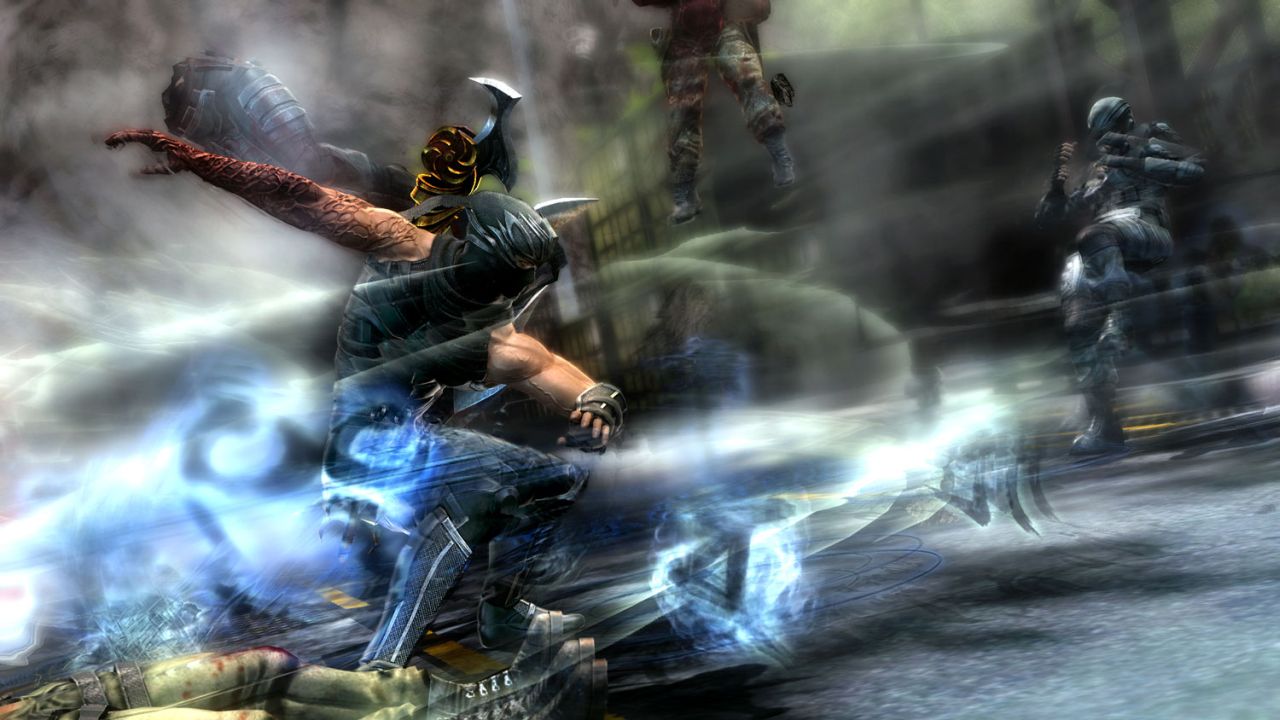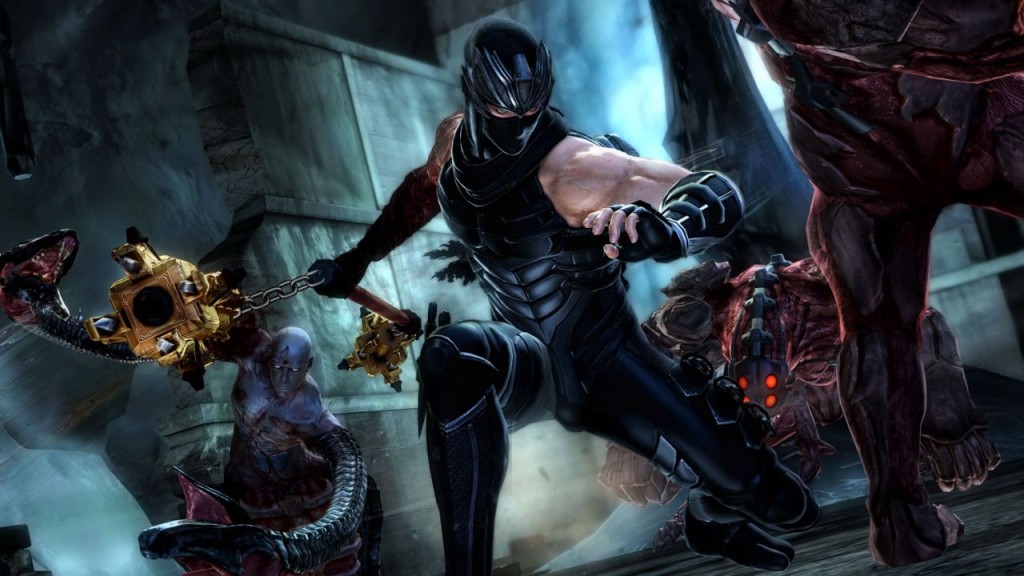
As the release of *Ninja Gaiden 4* gets closer this month, the developers at Team Ninja and Platinum Games have added some thrilling new features to the gameplay. They hope these changes will re-establish the series as a standout action game and revitalize the franchise after a long hiatus.
It’s surprising that a once-great action series like *Ninja Gaiden* hasn’t had a new main game in so long. While Team Ninja attempted to address the issues with the original *Ninja Gaiden 3*, that game may have contributed to the lengthy wait.
I’ve been thinking about the whole *Ninja Gaiden* story, and honestly, it feels like the studio made the right call by taking their time with a new game. But what *really* happened with *Ninja Gaiden 3*? It just didn’t click with players or critics, and I’m curious to know why. Then Team Ninja tried to fix things with *Razor’s Edge* – did that version actually work, and did it ultimately save the franchise?
Read on and find out as we turn back the clock on Ryu’s adventures!
The Third Time Wasn’t The Charm
It’s always a challenge for any game studio to create a third installment that lives up to the quality of its earlier, successful titles. Team Ninja clearly has talent, but *Ninja Gaiden 3* had a particularly difficult job: it needed to be as good as, or even better than, the highly-regarded second game in the series, and that’s a very high bar to clear.
Ninja Gaiden 3 clearly tried to innovate. The ‘Steel on Bone’ technique was a cool addition, offering a dynamic way to block attacks with a dramatic camera view. However, it oddly replaced the popular dismemberment feature from earlier games. It would have been ideal to include both the new technique *and* keep the beloved dismemberment system.

The Kunai Climbing feature in the game was a clever idea, but unfortunately, it didn’t work well in practice. Ryu climbed too slowly, making the mechanic frustrating rather than helpful. This was a common problem in *Ninja Gaiden 3*: promising concepts that were ultimately let down by poor implementation.
Although story wasn’t a major draw for the *Ninja Gaiden* series, the plot of Ryu’s third game was a significant contributor to its shortcomings. It unnecessarily restricted weapon variety and even removed Ryu’s signature Dragon Sword due to a curse inflicted by the Regent. The story was filled with constant betrayals, which became predictable and lost their emotional weight as the game progressed.
The game also introduced some heavy moral questions, with Ryu grappling with the consequences of all his past fights. While exploring this could have added depth to the story – something the game didn’t really focus on – it felt frustrating that the game didn’t acknowledge the simple fact that Ryu was often forced to kill or be killed, and that had a real impact.
One of our biggest frustrations with the game when it first came out was how much time was spent explaining things instead of letting the action unfold. These explanations didn’t make the story more impactful or add depth to the characters, and they didn’t offer the same kind of compelling narrative structure we’d seen in previous games. It felt like the story was just there to set up the action, rather than enriching it.

The game’s combat felt weak, in part because while the story allowed for large battles, it removed many of the rewarding elements of fighting. Team Ninja’s attempt to broaden the game’s appeal also played a role, as it lessened the difficulty that long-time fans of the series had come to enjoy.
The game struggled to strike a balance between the franchise’s notoriously high difficulty and a more user-friendly combat style, ultimately leading to a disappointing final product. While the negative reception from players and critics wasn’t a surprise, it was still unfortunate. It’s possible the new directors were overly ambitious, or they simply didn’t build upon the original creative ideas that had made the franchise successful.
Considering everything, *Ninja Gaiden 3* felt like a huge step away from what made the series successful, and not in a good way.
But then there was Razor’s Edge.
Turning Things Around
Team Ninja didn’t give up on their game, and their persistence paid off. While first released on the Wii U as *Razor’s Edge*, a later version for other consoles finally realized the creators’ original vision for *Ninja Gaiden 3*.
Ryu gained access to several new weapons throughout the game, which was a great addition. This brought back the popular Karma system and gave players more reason to engage with the many battles. Each weapon had unique attacks and unlockable moves, adding complexity to the original game’s combat and making each fight feel fresh instead of repetitive.
Man, getting Akane from *Dead or Alive* in the game was awesome! She really shook things up and gave us a totally different way to play. She had her own missions and a super unique style – she was fast, looked cool, and could take down enemies quickly. It was great to have another solid character alongside Ryu. And honestly, seeing the Black Spider Clan make a comeback was a really cool surprise!
Staying true to the series’ roots, the game brought back features like dismemberment, elements seen in past Ninja Gaiden games. This instantly made it feel like a proper Ninja Gaiden title, resolving the confusion of earlier builds and giving it a clear identity.

One of the biggest upgrades was the improved enemy AI. Enemies were more aggressive and would keep fighting even after losing a limb, which made battles feel intense and like a real fight for survival – exactly what you’d expect from a *Ninja Gaiden* game. The hidden skulls and Tests of Valor added to this, making the combat as tough and challenging as previous games in the series.
So, after all the changes they made, did Team Ninja actually manage to fix things with *Ninja Gaiden 3*? Honestly, yeah, for the most part they did. It’s really clear they listened to what players were saying and made smart choices based on that feedback. That’s probably why this version is the one they included in the Master Collection. And I think that’s a big reason *Ragebound* turned out so well too – they had all those hard-learned lessons from *Ninja Gaiden 3* to work with.
A New Chapter Begins
Team Ninja clearly learned from past games when creating *Ninja Gaiden 4*. The new game features multiple playable characters, a wider variety of weapons and enemies, and a stronger story – all improvements that show the developers are taking a more thoughtful approach to this ambitious project.
Early players are really enjoying the way the new game blends classic elements with fresh ideas, creating a lot of positive buzz before it even comes out. It feels like *Ninja Gaiden 3* had to struggle through a difficult time so that this new game could truly soar.
It remains to be seen if the latest installment in the *Ninja Gaiden* series will live up to expectations. However, Team Ninja has clearly improved with each game, and that makes us very optimistic about its future – we’re really excited!
We just need to watch Ryu’s next fight against the Dark Dragon next week to see what happens!
Please be aware that the opinions shared in this article belong solely to the author and don’t reflect the official stance of GamingBolt.
Read More
- Ashes of Creation Rogue Guide for Beginners
- Best Controller Settings for ARC Raiders
- Meet the cast of Mighty Nein: Every Critical Role character explained
- Tougen Anki Episode 24 Release Date, Time, Where to Watch
- Eldegarde, formerly Legacy: Steel & Sorcery, launches January 21, 2026
- Super Mario Galaxy Games Return on Switch 2 With 4K, Amiibos, New Rosalina Chapters & More
- Paramount+ Just Added One of the Best Sci-Fi Trilogies of All Time
- Inside Neutron Stars: A New Model for Ultra-Dense Matter
- Elizabeth Taylor’s Son Says Taylor Swift, His Mom Are Kindred Spirits
- Beyond Entanglement: A New Criterion for Quantum ‘Magic’
2025-10-19 19:13